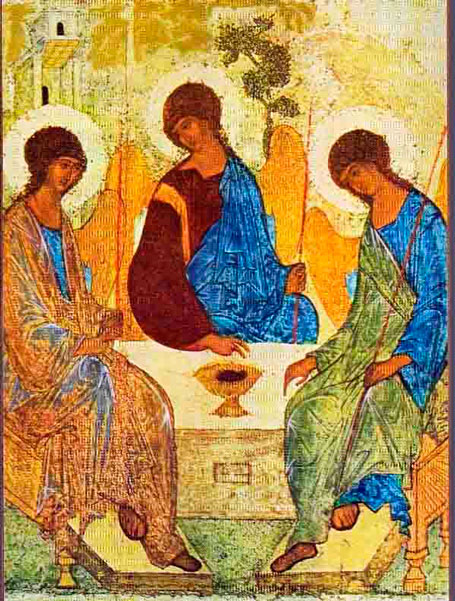The core belief
The doctrine of the Trinity is the Christian belief that there is One God, who is Father, Son, and Holy Spirit.
Other ways of referring to the Trinity are the Triune God and the Three-in-One.
The Trinity is a controversial doctrine; many Christians admit they don’t understand it, while many more Christians don’t understand it but think they do.
In fact, although they’d be horrified to hear it, many Christians sometimes behave as if they believe in three Gods and at other times as if they believe in one.
Trinity Sunday, which falls on the first Sunday after Pentecost, is one of the few feasts in the Christian calendar that celebrate a doctrine rather than an event.
A fundamental doctrine
The doctrine of the Trinity is one of the most difficult ideas in Christianity, but it’s fundamental to Christians because it:
-states what Christians believe God is like and who he is
-plays a central part in Christians’ worship of an “unobjectifiable and incomprehensible God”
-emphasises that God is very different from human beings
-reflects the ways Christians believe God encounters them is a central element of Christian identity
-teaches Christians vital truths about relationship and community
-reveals that God can be seen only as a spiritual experience whose mystery inspires awe and cannot be understood logically
Unpacking the doctrine
The idea that there is One God, who is Father, Son, and Holy Spirit means:
-There is exactly one God
-The Father is God
-The Son is God
-The Holy Spirit is God
-The Father is not the Son
-The Son is not the Holy Spirit
-The Father is not the Holy Spirit
An alternate way of explaining it is:
There is exactly one God
There are three really distinct Persons – Father, Son, and Holy Spirit
Each of the Persons is God
Common mistakes
The Trinity is not
-Three individuals who together make one God
-Three Gods joined together
-Three properties of God

 Trinity Sunday, the first Sunday after Pentecost, honors the Holy Trinity—the Father, Son and Holy Spirit. Although the word “trinity” does not appear in Scripture, it is taught in Matthew 28:18-20 and 2 Corinthians 13:14 (and many other biblical passages). It lasts only one day, which is symbolic of the unity of the Trinity.
Trinity Sunday, the first Sunday after Pentecost, honors the Holy Trinity—the Father, Son and Holy Spirit. Although the word “trinity” does not appear in Scripture, it is taught in Matthew 28:18-20 and 2 Corinthians 13:14 (and many other biblical passages). It lasts only one day, which is symbolic of the unity of the Trinity. 


